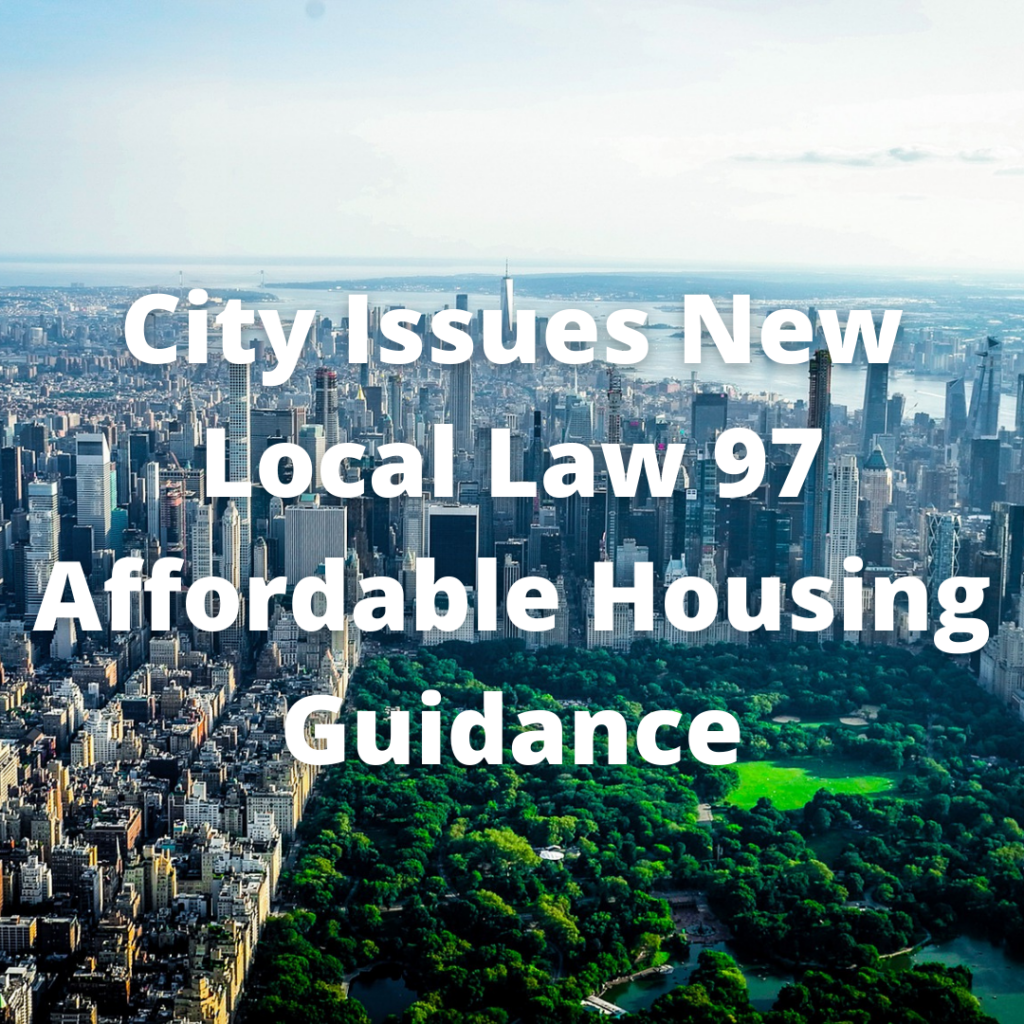Blog

City Issues New Local Law 97 Affordable Housing Guidance
New York City issued new guidance on compliance with Local Law 97 of 2019 (Local Law 97), as amended, for affordable housing and extended the compliance deadline for some types of rent regulated buildings. Local Law 97 requires most buildings over 25,000 square feet to meet progressively stringent greenhouse gas emissions (GHG) limits or to install certain prescribed energy conservation measures (ECMs), beginning in 2024. In general, there are three categories of affordable housing (plus a fourth for NYC Housing Authority (NYCHA) buildings), and each is provided its own compliance pathway. The City’s new guidance clarifies these pathways.
Most notably, for buildings in which at least one and up to 35% of the dwelling units are rent controlled or rent stabilized, the guidance extends the deadline for compliance with the initial GHG limits from 2024 to 2026. The annual compliance report will subsequently be due in 2027.
The second category of affordable housing, described below, does not have to meet the GHG limits until 2035 (as established in Local Law 97). This category includes:
- Buildings owned by a limited-profit housing company organized under Article 2 of the Private Housing Finance Law (i.e., Mitchell Lama buildings).
-
- Buildings that contain one or more dwelling units for which occupancy is restricted based upon the income of the occupant pursuant to the Private Housing Finance Law, the General Municipal Law, or Section 420-c of the Real Property Tax Law. The City’s guidance clarifies that this category includes buildings with Section 420-c, Article XI, or Urban Development Action Area Program (UDAAP) exemptions—but that units with an income restriction imposed solely through the Zoning Resolution (e.g., Inclusionary Housing programs) are excluded from this category.
-
The third category, described below, has the option of meeting the 2030 GHG limits in 2024 or installing ECMs. This category includes:
- “Rent regulated accommodations,” meaning buildings in which more than 35% of the dwelling units are rent controlled or rent stabilized.
- Buildings owned by a housing development fund company (HDFC) organized pursuant to the Business Corporation Law and Article 11 of the Private Housing Finance Law.
- Buildings that participate in a project-based federal housing program. The City’s guidance clarifies that this category includes buildings with U.S. Department of Housing and Urban Development project-based assistance (e.g., Sections 8, 202, 811, Continuum of Care) and buildings on NYCHA land that participate in the Permanent Affordability Commitment Together (PACT)/Rental Assistance Demonstration (RAD) program.
Regarding NYCHA housing, the New York City Council passed Int 2283-2021 (Local Law 101 of 2021) in September 2021, which among other things, requires NYCHA to annually report to the Department of Buildings the amount of GHG emissions for the NYCHA portfolio. NYCHA must also make efforts to reduce its GHG emissions by 40% by 2030 and 80% by 2050, relative to its emissions from calendar year 2005.